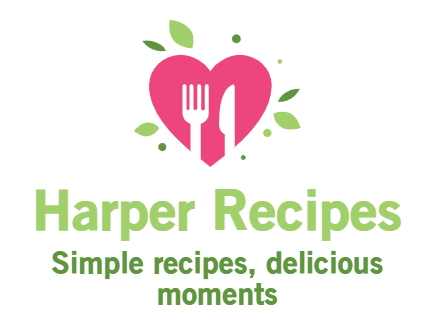There’s something almost magical about biting into a slice of warm, buttery French brioche bread. It’s fluffy yet rich, sweet but subtle, and versatile enough for both breakfast and gourmet meals. In this guide, we’ll explore everything about this iconic French bread—from how it’s made and eaten to how it compares with regular bread. Whether you’re baking it yourself or choosing the best loaf at the store, we’ve got you covered.
Looking for inspiration? Try our guide on Irresistible Cheesecake Bars.
What Is French Brioche Bread?
Origins of French Brioche: A Blend of Pastry and Bread
French brioche bread dates back to at least the 15th century, with its roots in Normandy. Unlike traditional bread, brioche is made with an enriched dough that includes eggs, butter, and milk—making it more of a pastry than plain bread.
Characteristics That Set Brioche Apart
What makes brioche stand out? It’s the golden crust, fluffy interior, and slight sweetness. When sliced, brioche reveals a soft, tearable texture that melts in your mouth.
Why Is Brioche Bread So Special?
The Rich Dough: Eggs, Butter, and Milk Explained
Brioche is made from enriched dough. This means it’s not just flour, water, and yeast—it includes:
- Eggs: Give richness and color
- Butter: Adds softness and flavor
- Milk: Makes it more tender
Unique Flavor and Texture That Defines Brioche
Brioche has a naturally sweet taste but remains balanced. It’s often described as a “buttery cloud.” The inside is moist and airy, while the outside is golden and crisp after baking.
How French Brioche Bread Is Traditionally Made
Ingredients Needed for Authentic French Brioche
| Ingredient | Role in Dough |
|---|---|
| All-purpose flour | Structure |
| Eggs | Richness and texture |
| Unsalted butter | Flavor and softness |
| Sugar | Light sweetness |
| Whole milk | Moisture and tenderness |
| Active dry yeast | Rising agent |
| Salt | Flavor balance |
Classic Kneading, Proofing, and Baking Techniques
Making brioche involves several stages: mix ingredients, knead until elastic, incorporate butter slowly, let rise, chill overnight, then shape and bake until golden.
Brioche Bread vs. French Bread vs. Regular Bread
Key Ingredient Differences and How They Affect Taste
| Bread Type | Key Ingredients | Taste Profile | Texture |
|---|---|---|---|
| Brioche | Eggs, butter, milk | Sweet, buttery | Soft and rich |
| French Bread | Flour, water, yeast | Neutral, rustic | Chewy and crusty |
| White Bread | Flour, water, oil | Mild | Soft but dry |
Texture and Application Comparison
Brioche suits French toast and dessert bakes, while French bread is ideal for sandwiches. Choose brioche when flavor and indulgence are your priorities.
How to Eat French Brioche Bread
Sweet Breakfast Uses: Toast, French Toast, Spreads
Try it toasted with jam, made into French toast, or topped with Nutella, honey, or whipped cream.
Savory Meals: Burgers, Sandwiches, and More
Brioche pairs well with savory dishes like gourmet burgers and pulled pork. Check out our Cookie Cannoli idea for unique fillings.
Is Brioche Healthier Than Regular Bread?
Nutritional Facts and Comparisons
| Bread Type | Calories | Fat (g) | Protein (g) |
|---|---|---|---|
| Brioche | 170–200 | 7–10 | 5 |
| White Bread | 90–110 | 1–2 | 3 |
| Whole Wheat | 100–120 | 1–2 | 4 |
When to Eat Brioche in a Balanced Diet
Enjoy brioche occasionally and balance with lean proteins or fruits. It’s perfect as a weekend indulgence or special meal addition.
Variations of French Brioche Around the World
Regional French Variations
- Brioche Nanterre: Rectangular loaf with dough balls
- Brioche à tête: Round with a knob on top
- Gâteau de brioche: Festive, cake-style version
Global Twists: Chocolate, Filled, and Gluten-Free Brioche
Today’s bakeries feature brioche filled with jam, cream, or chocolate. There are even gluten-free options made with almond flour.
Learn more about fusion flavor baking with brioche-inspired sweets.
How to Store, Freeze, and Reheat Brioche Bread
Proper Storage Methods for Freshness
Store brioche at room temp for up to 3 days in a sealed bag. Refrigeration can dry it out—avoid unless necessary.
Freezing and Reheating Tips Without Losing Flavor
- Freeze pre-sliced brioche in zip bags.
- Reheat in oven or toaster at 300°F for 3–5 minutes.
Homemade vs. Store-Bought Brioche Bread
Flavor and Texture Differences
Homemade brioche is typically softer, fresher, and more flavorful than mass-produced ones, which may include preservatives.
When to Buy, When to Bake Your Own
Bake it when you want full control over ingredients and texture. Buy it when convenience matters most.
FAQs
What is so special about brioche bread?
Brioche is rich, buttery, and sweet, unlike regular bread. Its soft crumb and golden crust make it a unique hybrid between bread and pastry.
How do you eat French brioche bread?
Serve it toasted, use it for French toast, pair with meats or sweet spreads—it’s incredibly versatile.
Is brioche healthier than bread?
No. Due to its enriched dough, brioche contains more fat and calories. It’s best enjoyed in moderation.
What is the difference between brioche bread and French bread?
French bread is lean and crusty; brioche is rich, sweet, and soft due to added eggs and butter.
Conclusion
French brioche bread is more than just a loaf—it’s an experience of flavor, texture, and tradition. Whether you bake it or buy it, brioche adds elegance to every meal. Give it a try and explore the sweet world of buttery French baking.
